The story of Sir Ernest Shackleton is a truly remarkable example of human endurance and the will to survive. An attempt to be the first humans to cross Antarctica would soon become a test of their spirit and a series of unfortunate events.
After sailing into a particularly cold Antarctic summer their ship would become frozen into place and sink. This would leave them on a shifting ice floe fighting to survive for months.
Join us as we explore the extraordinary Antarctic expedition of Shackleton and his crew.
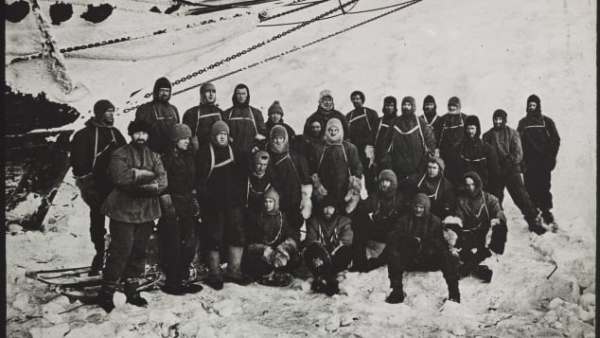
The Last Frontier of Exploration
The Age of Discovery saw Europe become gripped in a race to explore the unknown places on their maps. From the 15thcentury to the 18th century, these Empires started to attempt the things considered impossible and the massive economic value that came with the discovery of the Americas led to a flood of colonizing missions.
Early explores like Ferdinand Magellan who had the mission to try and be the first to sail around the globe were overshadowed by conquistadors who aimed to exploit these newly discovered lands. Of course, the term “discovered” refers to what the Europeans considered these already inhabited places with centuries of history and traditions.
By the 19th century all of the continents had found their place on the world maps but there were many spots that were not filled in.
A new age of exploration emerged with privately financed voyages or Royal Geographic missions sailing into the last blank spaces.
Explorers like Percy Fawcett went looking for a hidden empire in the Amazonian jungles of Brazil and Sir John Franklin disappeared attempting to navigate and map the entire Northwest Passage. While legends like Roald Amundsen had been the first to navigate the Northwest Passage and then used his polar knowledge to beat Cpt Robert Scott in a race to the South Pole.
So, when Ernest Shackleton raised the money to buy a ship and hire a crew, he hoped to gain fame and glory as the first expedition to cross Antarctica via the South Pole.
This flood of enthusiasm led to one of the last real epics in the history of exploration and marked the height of the Heroic Age of Antarctic Exploration.
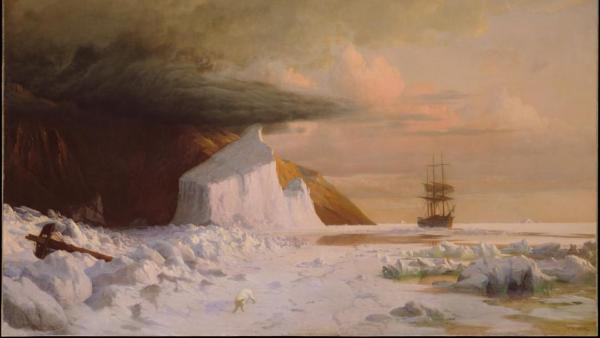
The Imperial Trans-Antarctic Expedition
There was little known about the continent of Antarctica when Shackleton began fundraising and publishing papers about his expedition. The fact that it was harsh and uninhabitable meant that enthusiasm had dwindled over the frozen continent.
Explorer James Cook and his crew became the first people known to cross the Antarctic Circle but never saw the mainland. It would be American sealers that were the first to set foot on Antarctica and it would be mostly whalers that would stay interested on the Southern Ocean. The fact that the mainland was surrounded by a dangerous maze of shifting ice floes stretching for hundreds of kilometres made any attempt more dangerous than most places on Earth.
These risks wouldn’t stop Shackleton, who had experience in Antarctica and had been on Cpt Scott’s expedition but had been sent home before Scott and his companions died.
Shackleton planned to travel on his ship, Endurance to one side of Antarctica and travel by dog sledge across the south pole and to the other side of the continent where a second ship would create resupply depots and transport them home.
On August 8th, 1914 the expedition set sail for Beunos Aires with Shackleton following soon behind on another ship, as he was held up with expedition business and World War 1 starting a few days earlier.
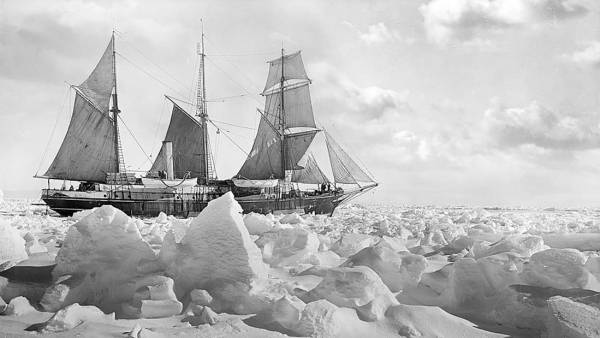
A Cold Antarctic Summer Turns into a Long Polar Night
The expedition reached their final stop at a whaling station on South Georgia Island. Here, the whalers told the crew that it was an especially cold summer and that the sea-ice was extensive.
Undeterred, Endurance set off for the Wendall Sea on December 5th, 1914 hoping to take advantage of the Southern Hemisphere’s summer.
The captain of the ship, Frank Worlsey, wants to make landfall at the closest point in the hopes of simply reaching the mainland before the ocean completely freeze but Shackleton wants to keep going. Shackleton hoped to sail as far south as they could to make the overland trip easier and more direct. But soon, Endurance became locked in the ice and they prepared to wait until the next summer.
This must have been an incredibly daunting prospect for them, waiting on a ship trapped in the ice. It would have been a discombobulating combination of dead silence only broken by the sharp whines and creaking of the ship.
The crew began to affectionately refer to their winter home “the Ritz” and would pass the time with whatever leisure objects and naval tasks they could find. They had books to read, they could listen to records, and even a billiards table. People went for snow baths and chipped away at the ice forming on the boat. They would fetch snow to boil for drinking water and hunt seals or penguins.
Despite their best efforts to keep moral high, it would have been psychologically trying to make it through a whole winter without any daylight. It was during this polar night that they realized their mission was over and they wouldn’t reach Antarctica. They were shifting, bobbing and floating around in an ocean gyre that was slowly taking them further from the mainland.
For months they continued to keep the ship in optimal condition until the pressure of the shifting ice became too much and Endurance began to tilt and lean on its side. After almost a year since they entered the South Ocean, the order went out to abandon ship.
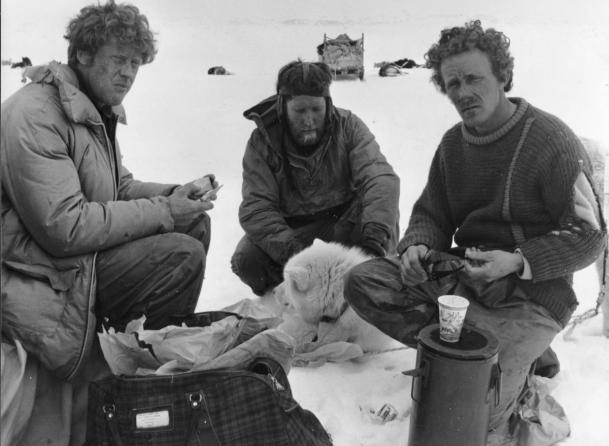
Abandoned on the Ice
The ship had begun to take on water and the masts had broken so they all must have known there was no hope of sailing home on Endurance the thought of this must have been terrifying.
They were like astronauts on the Moon with a broken spaceship and now they had to survive in temperatures reaching -50oC and only tents and wool clothing. They had reindeer hide sleeping bags, but they soon became soaked from the constantly changing weather and ice conditions. Shackleton and the crew had to do something if they wanted to make it home.
Captain Worlsey, always the navigator, had been tracking their coordinates while they were floating in the current of the Wendall Sea and he suggested that they should wait until they were eventually pushed out towards the open water and then use their lifeboats to get to safety.
Shackleton had always specialized in keep his sailors moral high and was always focusing on encouraging they to endure. In fact, he named his ship Endurance after his family motto, “by endurance we conquer.”
It was Shackleton’s plan to trek across the ice to Paulet Island in the hopes that movement and a goal will help his men survive. The problem was that it was over 556 km (346 mi) away across a rolling tundra of ice ridges and pack ice dragging 1 ton lifeboats.
They packed the most essential items into their three lifeboats and began pulling them. After a couple days they stopped recognizing the damage they were doing to the lifeboats, which were their last hope for survival. They were travelling around a mile a day, but the sea current was sometime moving them backwards. So, they decided to stop and wait for the ice to make its way to the open water.
They were still within eyesight of Endurance and watched from a distance as it finally sunk beneath the ice.
After five weeks Shackleton grew restless and decided that they would attempt to trek to Paulet Island again but at night when the ice was firmer and slightly easier to navigate.
At one point the carpenter tried to stir up a mutiny and Shackleton threatened him with his pistol. But after seven days they had only gone 16 km (10 mi) and even Shackleton knew it was hopeless. Captain Worlsey showed him that it would take over a year to reach the island at this rate. They built a base they named Patience Camp and hoped for the best.

The Great Escape
After 15 months of living on pack ice they finally caught a glimpse of open water. They got into their lifeboats and pushed off, once again relying on Captain Worlsey’s navigations. There are a very small amount of islands in the Southern Ocean and if they were to miss their intended island, even by 200 yards, they would all die floating in the harshest ocean on Earth in open lifeboats.
The plan was to aim for the South Shetland Islands but once they began Worlsey realizes they won’t make it so they change course for a glacial jut of land called Elephant Island. The conditions were so terrible that Shackleton got frostbite giving his gloves to the cook and it was said that they had to physically flatten Worlsey from frozen position at the helm so that he could rest. And just as they caught their first glimpse of Elephant Island a rainstorm arrived and almost threw them off course, but they would reach the island.
It is incredible to think, that any one of us would consider this one of the most uninhabitable places in the world but after living on an ice shelf for over a year, that they sailors must have been overjoyed at the safety and stability of Elephant Island. The island is hardly more than steep towering peaks with glaciers running down and into the ocean. A tiny shoreline is where they would make camp.
This was not the end though, and they knew they were in the clear yet. Shackleton and Worlsey picked four other men and planned to take on of the lifeboats to try and reach the whaling station they had visited on South Georgia Island at the beginning of their expedition.
They would take the wood from two of the lifeboats and make the third boat extra durable and somewhat prepared for the tumultuous waters ahead. This meant that this one boat was the absolutely last hope for the men left on Elephant Island and everyone’s life was in the hands of these six men.
Captain Worlsey would take the helm again, with Shackleton confessing he had no experience with small boats, and they set out into the harshest ocean in the middle of winter. The conditions were so terrible that it was three days before they saw the Sun and Worlsey could take a navigation reading. In 16 days he would only be able to take four readings to know where they were and to plan their route. Imagine trying to take a reading through a sexton instrument in the middle of 20 metre waves after eating nearly nothing for a year.
Then, they saw the peaks of South Georgia Island only 24 km (15 mi) when a hurricane storm appeared. The storm was so gigantic that a 500 ton steam boat sank on the other side of South Georgia Island.
Now their biggest fear was not dying from crashing into the place that was supposed to save them. They would land safely on the island but on the opposite side of the island from the whaling station.
The would have to cross the island but because no one had ever done that before the map only indicated the shoreline and the interior of the island was not filled in. What they could see with their eyes were towering mountain range that reached 2,740 m (9,000 ft) elevation.
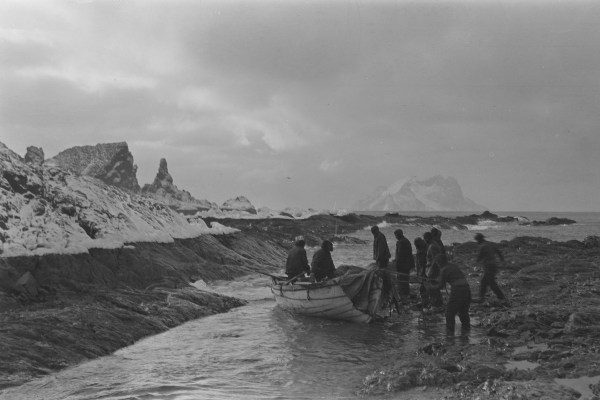
Setting Forth into the Unknown
Shackleton, Worlsey and one other set out to reach the whaling station, leaving the three men to recover. All they had was a 27 m (90 ft) rope and had hammered screws into their boots to act as crampons to attempt crossing the mountain range.
For days they climbed and refused to sleep believing that they’d never get up again. At one point they found themselves at the top of a steep mountain ridge with night quickly approaching. They knew that they could not survive the temperature at this altitude at night so they linked arms and slid down the snowy couloir with no idea what might be below. Luckily, they made it and had travelled a great distance giving them the encouragement they needed to continue.
Finally, one morning at 6:30 AM Shackleton believed he heard a whistle, possibly a morning work whistle from the whaling station but no one else had heard it. So, at 7:00 AM they all stopped, held their breath and listened. Sure enough, they all heard a faint whistle calling the whalers to work.
It is impossible to imagine their relief. This was the first human noise they had heard in 17 months. When they showed up these whalers living on the edge of the world must have been astonished at the sight of them.
Shackleton did not stop to listen to congratulations and organized a ship to rescue the three men on the far side of the island.
However, due to World War 1 the British were preoccupied and couldn’t send support to rescue the rest of the crew. Shackleton and his team would make four attempts to rescue the men on Elephant Island. Three were turned back due to weather and ice conditions but finally they were able to get through on a small Chilean ship.
It had been 128 days since Shackleton had last seen the men on Elephant Island and he must have been wondering how many of them survived, or if any were still alive.
But as soon as they came within eye sight he started to see movement on the beach and men coming out of tents. Sure enough, they had all made it and they rescued every sailor.
It is a story that is hard to believe and inspiring in a horrific way! To think that all 28 men would make it through ever trail and disaster that fell upon these sailors living through the harshest conditions on this planet, it’s unbelievable.
To call it a miracle does not give credit to the remarkable capacity and will of the crew. Shackleton has entered the legends of history for his leadership, but the single most pivotal figure was captain Worlsey. His dedication to taking coordinate readings and making such vital calculations under devastating conditions is beyond extraordinary.
Only days ago, after 107 years under the Antarctic waters, a team of researchers discovered the shipwreck of the Endurance. The team used the detailed coordinates and notes of Worlsey to locate the ship and found it only a few kilometres from where it was marked as sinking.
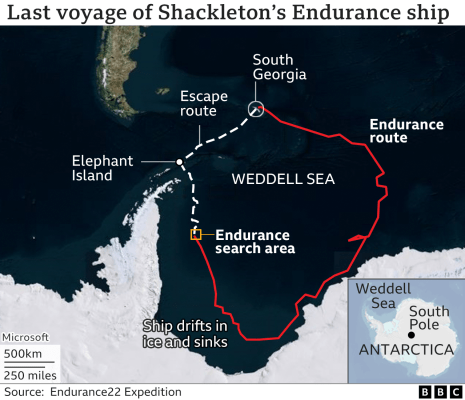
You Can Visit Antarctica in Comfort
Today, it is much safer to sail to Antarctica in modern ships and comfortable yachts. It is a beautiful journey through the same waters that were made famous in the Heroic Age of Antarctic Exploration.
With over 20 years providing polar expeditions and vacations full of bucket list activities or experiences, we invite you to travel with us to Antarctica.
Find out more about our Private Journeys where you can craft a trip to your goals and interests. Work with our expert polar advisors to build the adventure of your dreams.
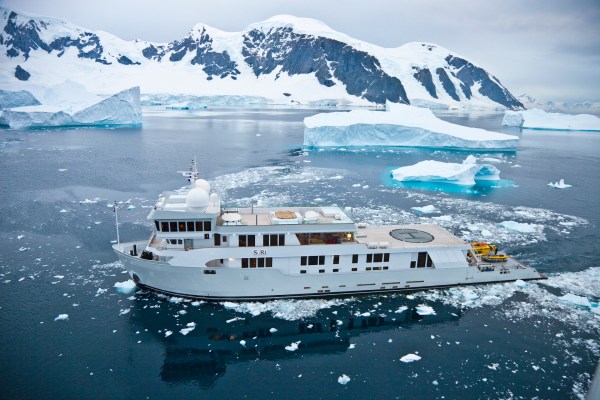
Experience The Arctic On A Safari
Get chances to view elusive Arctic wildlife and experience the majesty of the Arctic on safaris almost year-round. View all Arctic Safaris here.
Ready for adventure? Contact our Arctic Travel Advisors to book.
We now have a Gear Shop where you can browse some of the best outdoor clothing and equipment to buy or gift to friends and family.
Are you still curious about the many wonders of the Arctic or looking for more interesting content then explore more blogs here!
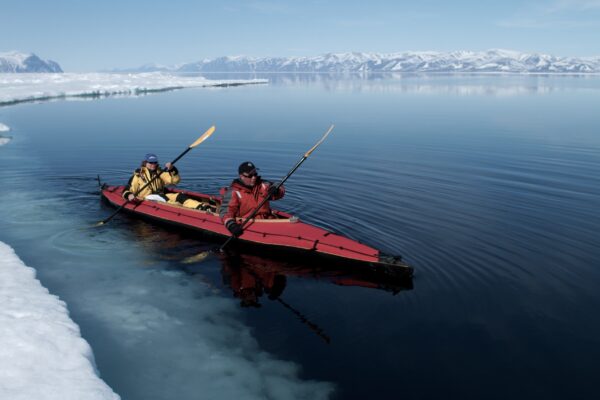
By: Mathew Whitelaw


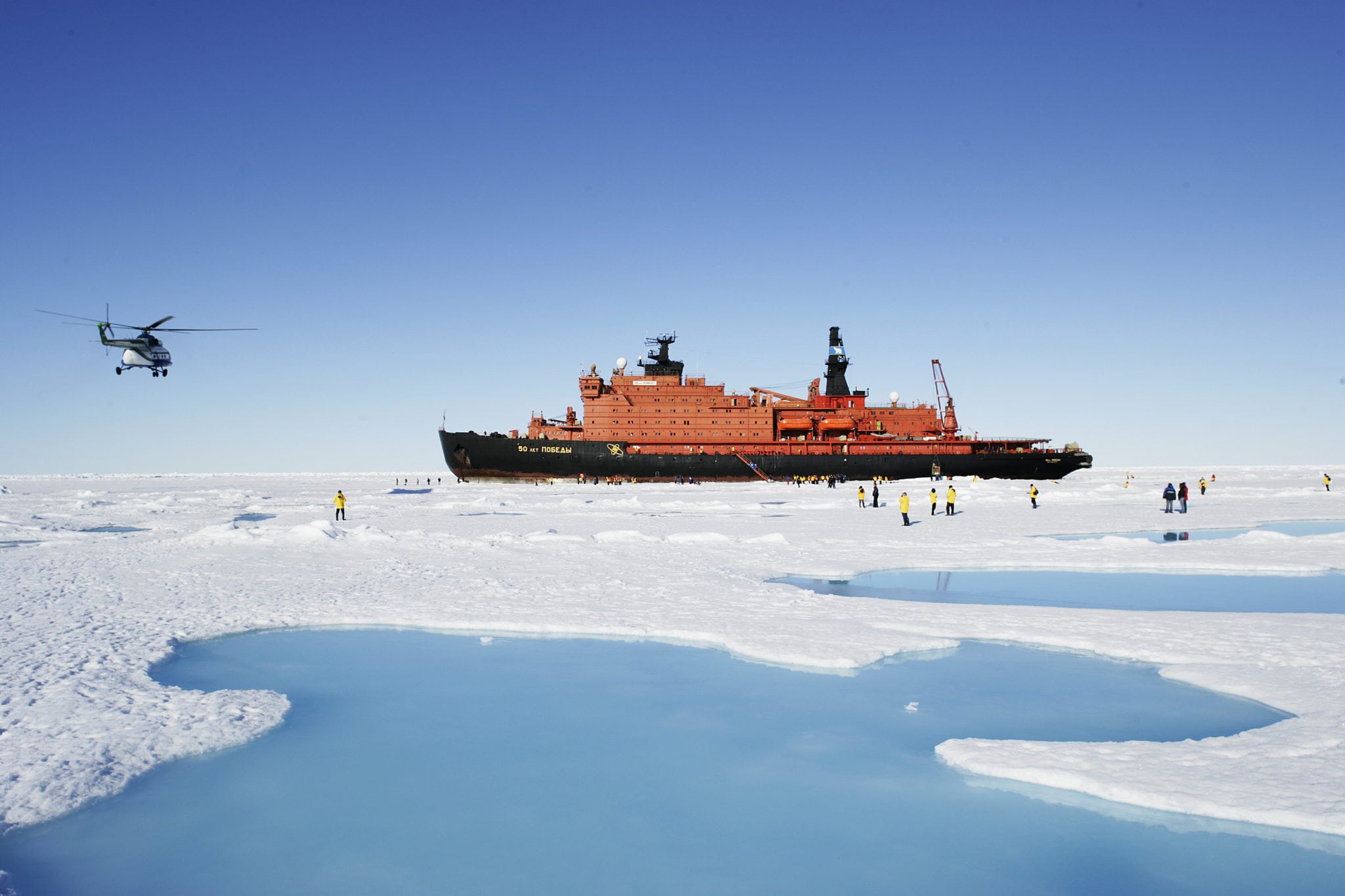
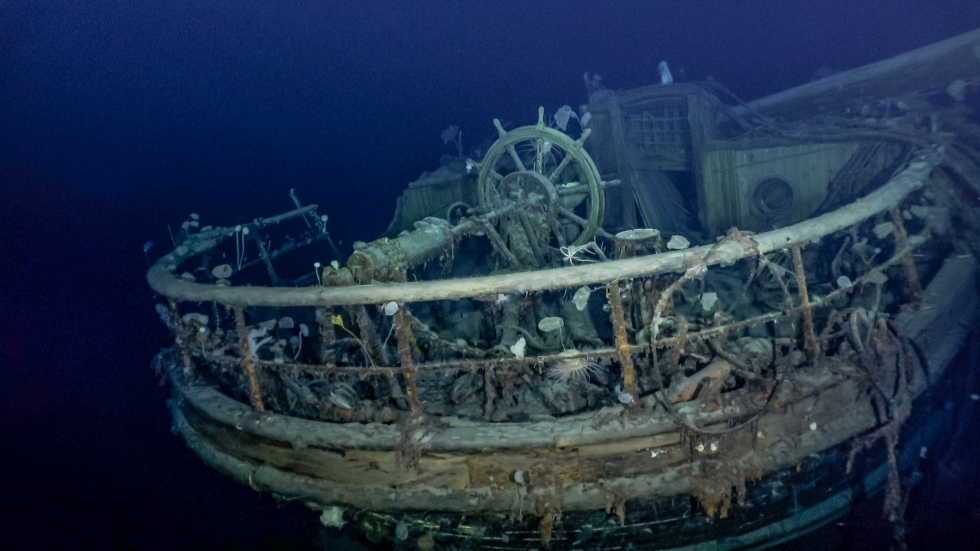
.jpeg)